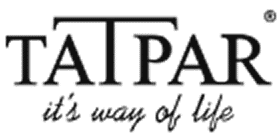Executive Summary
This case study details the manual process undertaken to remove a virus from the code of wordpress themes, plugins, and core files within the wp-admin and wp-includes folders. The website was crucial for the client and had been compromised, leading to potential security vulnerabilities and performance issues. The objective was to manually identify and remove the malicious code, secure the website, and restore normal operation without data loss.
Background
- Client: A business utilizing a WordPress website for content management and communication.
- Problem Statement: The website was infected with a virus that compromised the code in themes, plugins, and core files in the wp-admin and wp-includes folders. This resulted in security vulnerabilities and unauthorized access, posing significant risks. The links on the pages were redirecting to unknown pages.
- Objective: The primary goal was to manually remove the virus from all infected files, restore the website’s functionality, and implement measures to prevent future infections.
Challenges
1. Identifying Infected Files:
- The virus had spread across various parts of the website, making it difficult to pinpoint all infected files.
- Hidden malicious code was embedded within legitimate code, complicating detection.
2. Restoring Functionality:
- Ensuring that cleaning the infected files did not disrupt the website’s functionality.
- Preventing data loss during the cleaning process.
3. Preventing Future Infections:
- Implementing security measures to protect the website from future attacks.
Results
Virus Eradication and Security Improvement:
- Successfully removed all instances of the virus from themes, plugins, and core files.
- Restored the website to full functionality without data loss.
Enhanced Security Posture:
- Hardened website security to prevent future infections.
- Continuous monitoring and regular updates ensured ongoing protection.
Client Satisfaction:
- Improved website performance and user experience.
- Enhanced client confidence in the security and reliability of their website.
Conclusion/Future Scope
The project effectively addressed the critical issue of a compromised WordPress installation by manually removing the virus from themes, plugins, and core files, and implementing robust security measures. This comprehensive approach ensured the restoration of the website’s functionality and provided a secure foundation for future operations.
Advanced Security Measures: Explore and implement advanced security solutions such as two-factor authentication (2FA) and security audits.
Regularly update and review security protocols to adapt to evolving threats.
Continuous Improvement: Maintain a proactive approach to security with continuous monitoring and regular updates.
Conduct periodic security reviews and penetration testing to identify and mitigate potential vulnerabilities.
Client Support and Training: Offer ongoing support and training for the client to stay updated on security best practices.
Provide regular security briefings and updates to ensure the client remains informed about new threats and protective measures.















